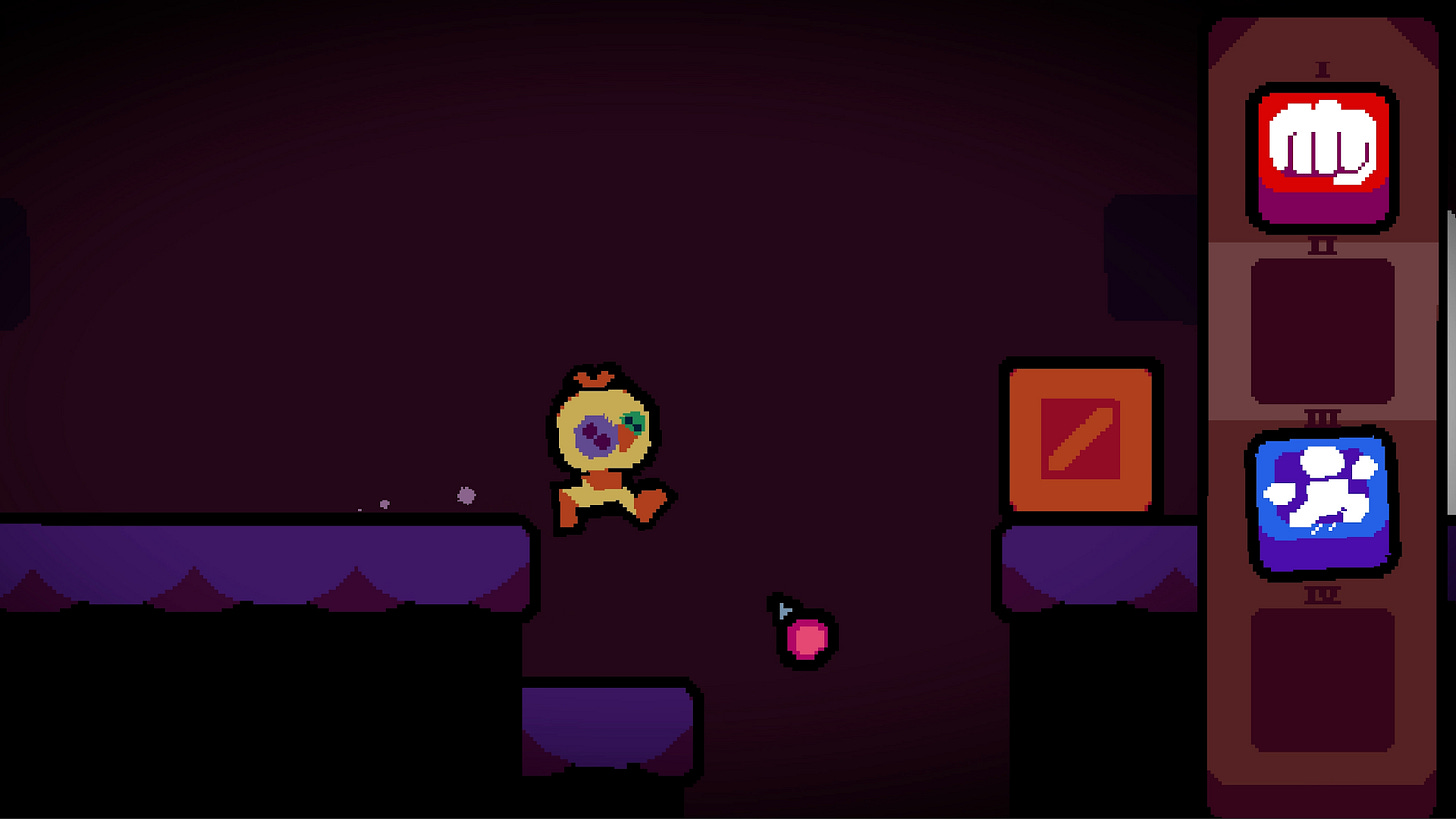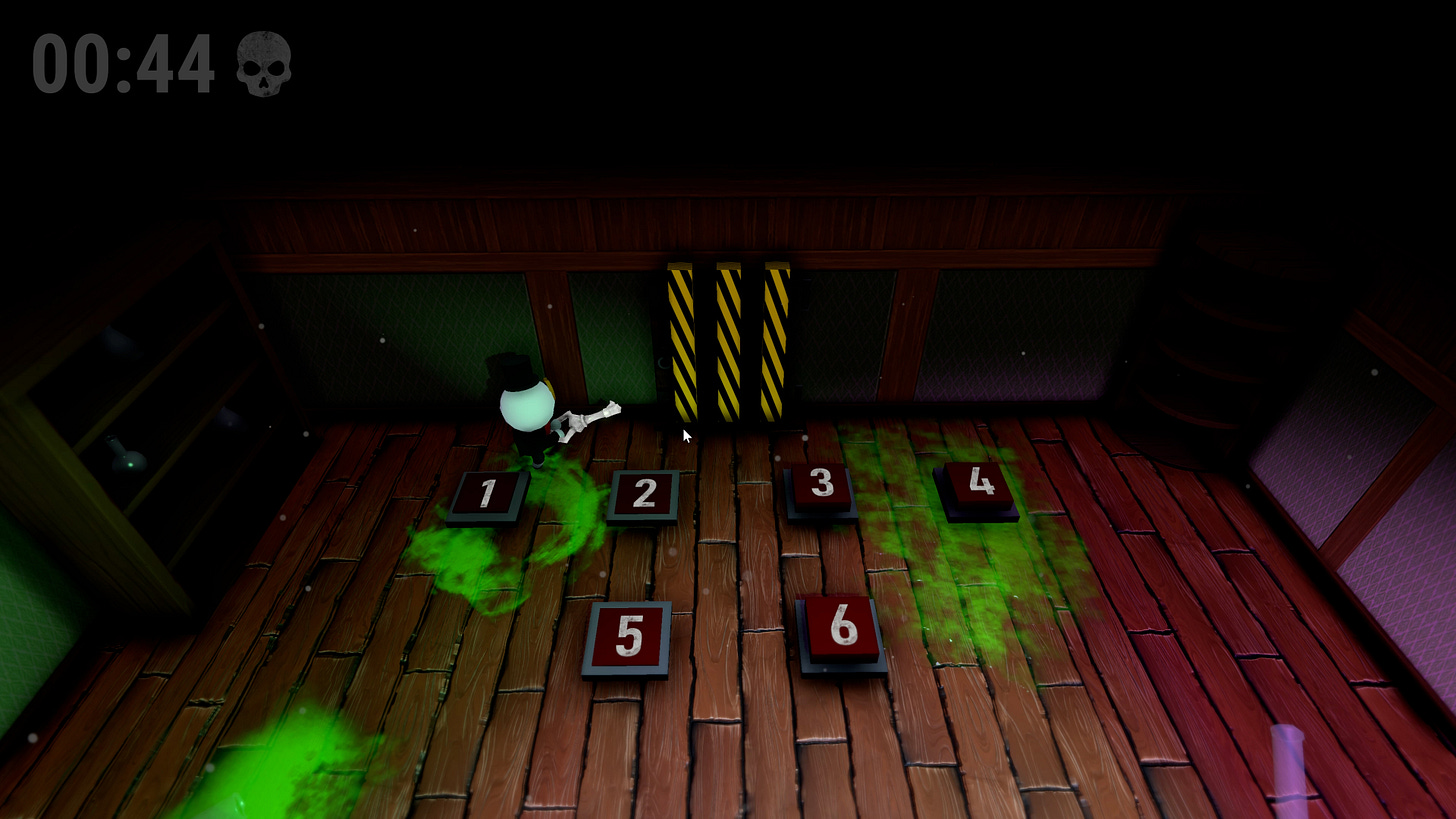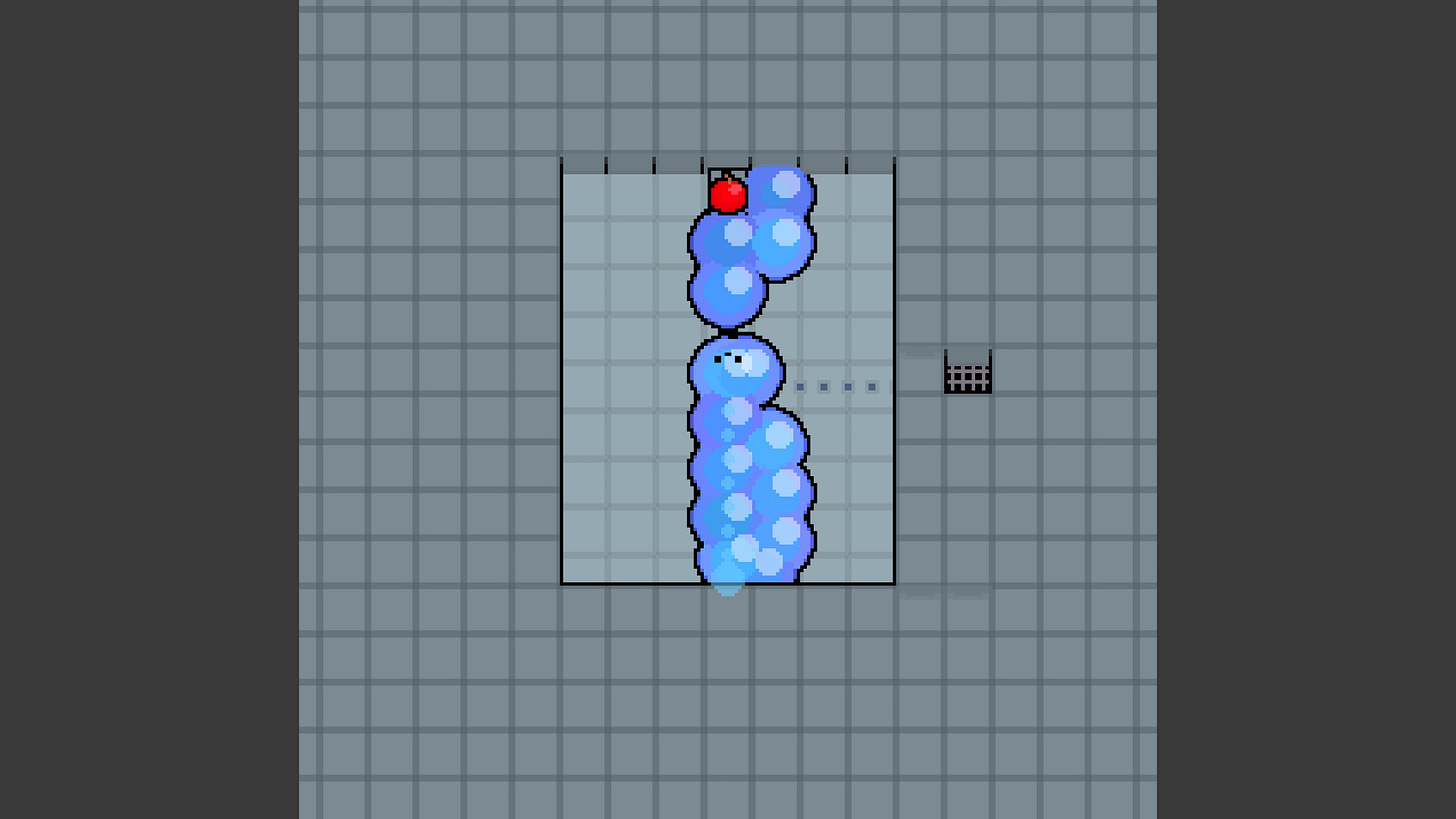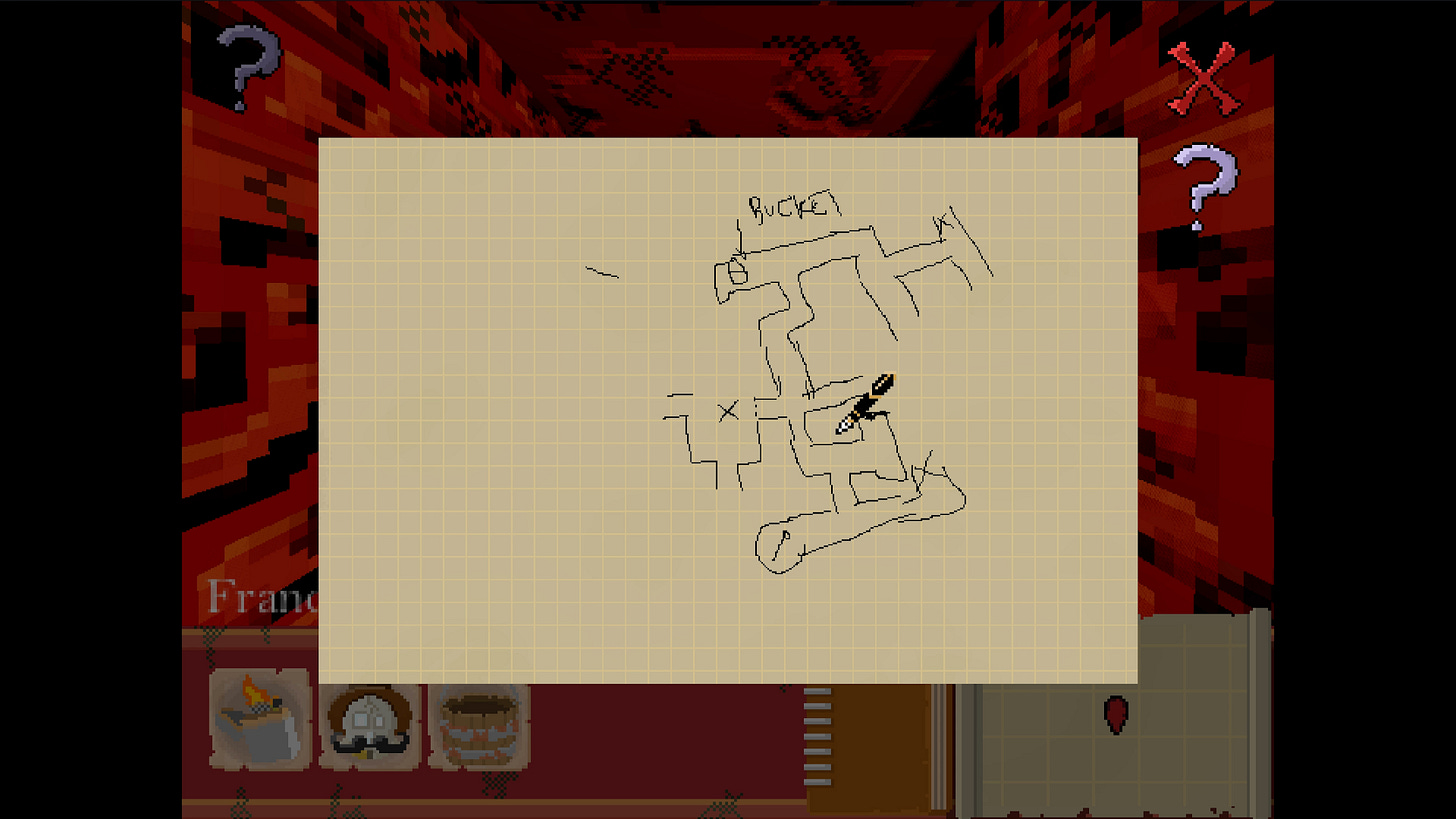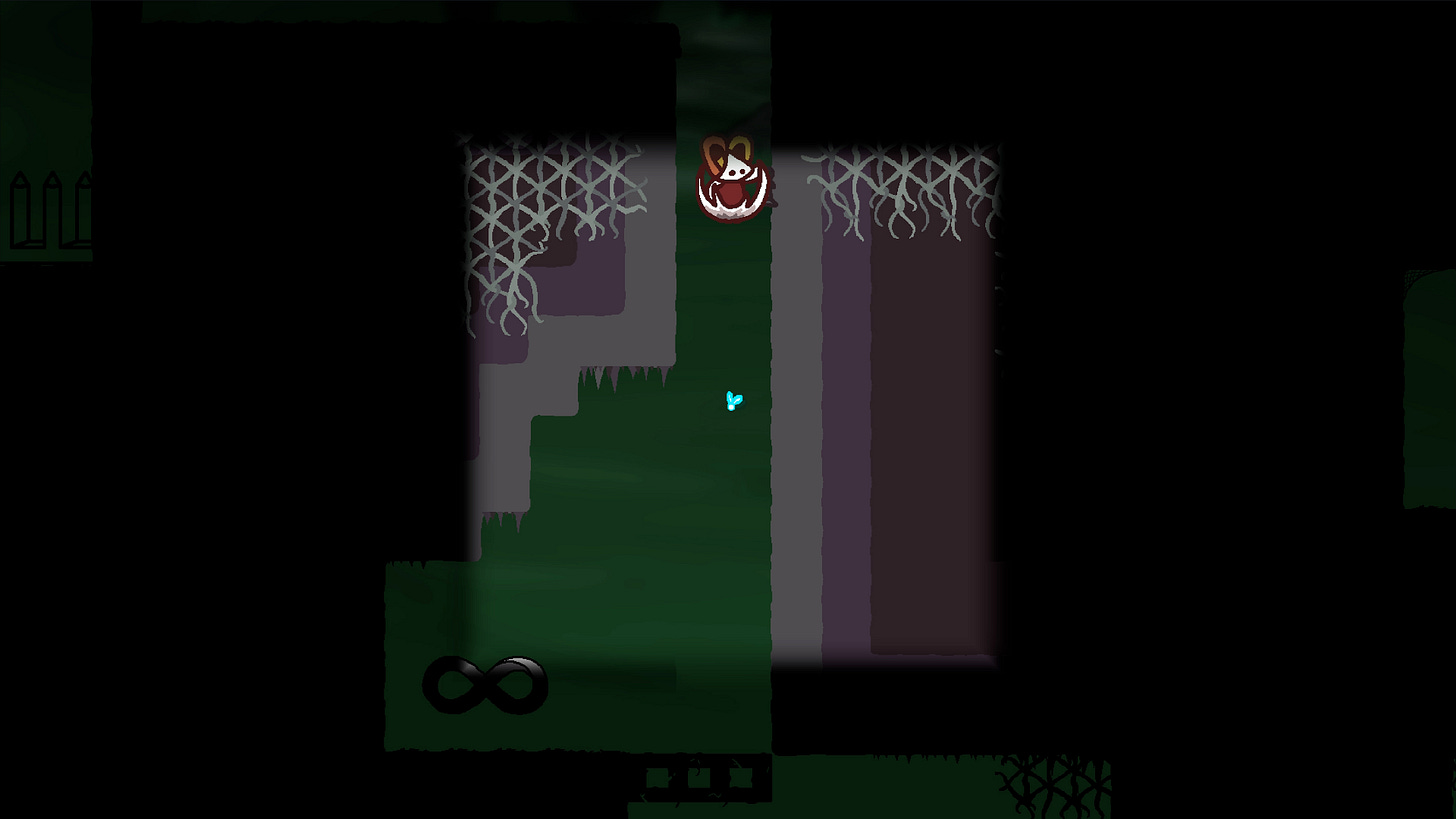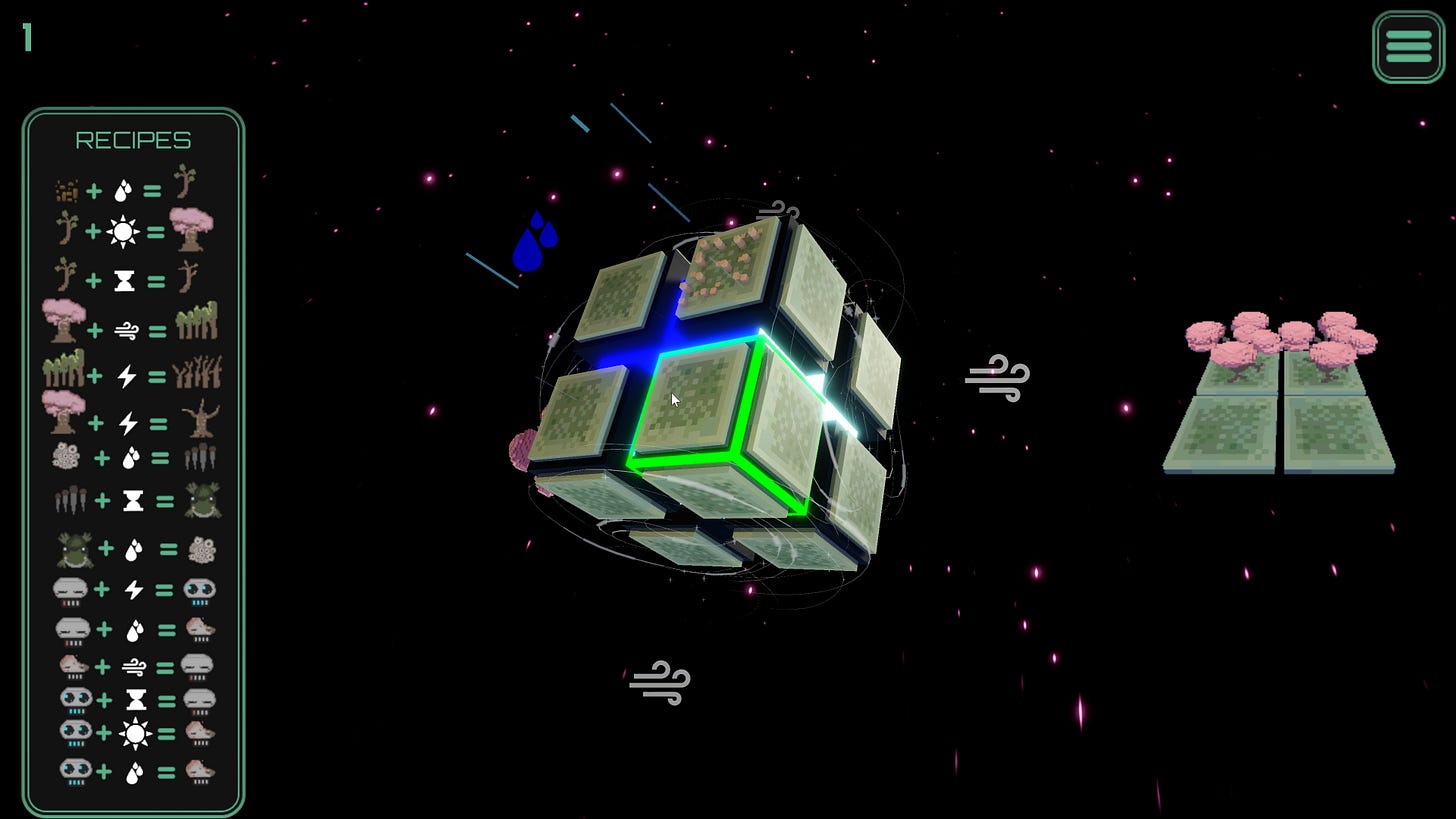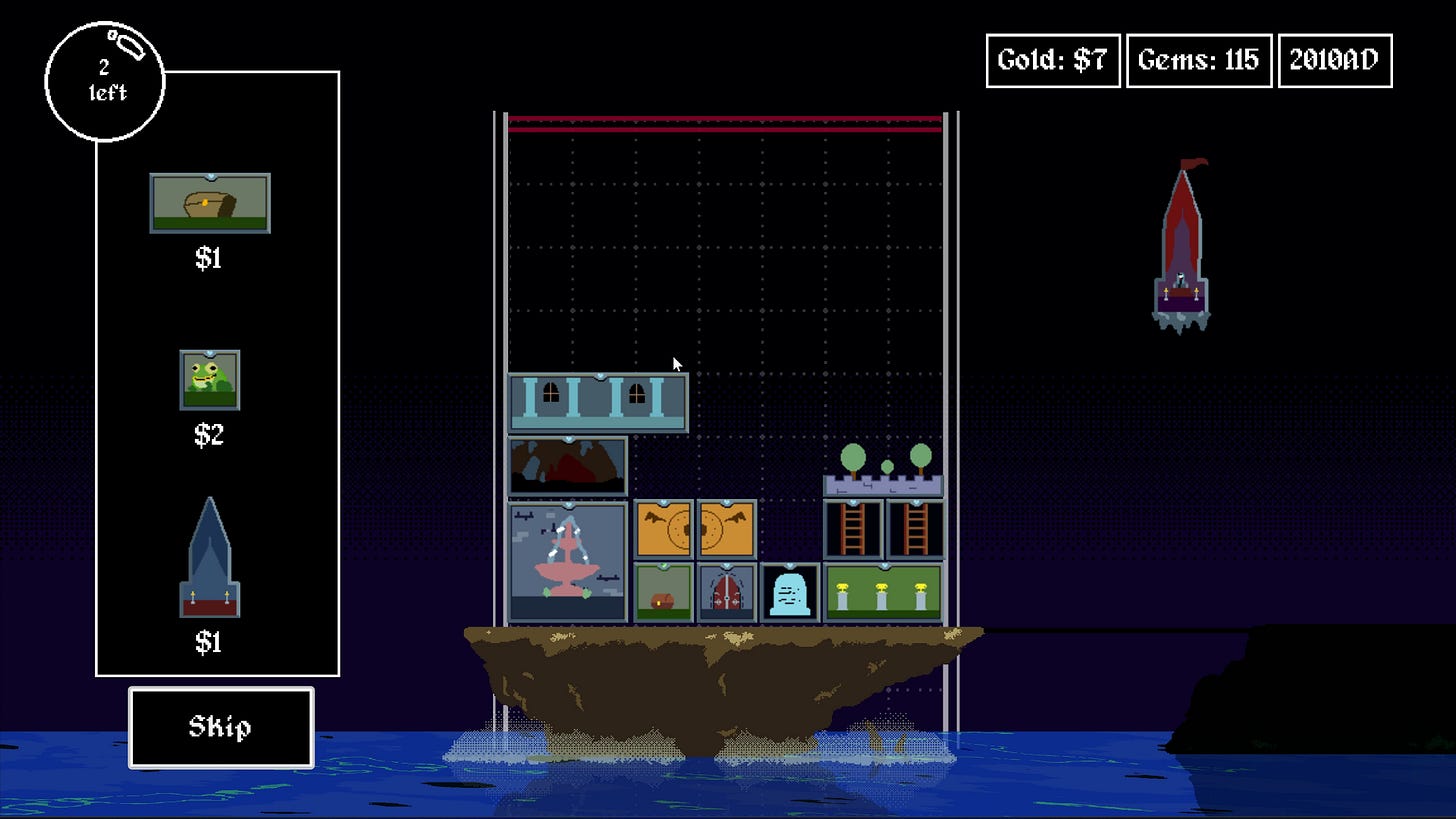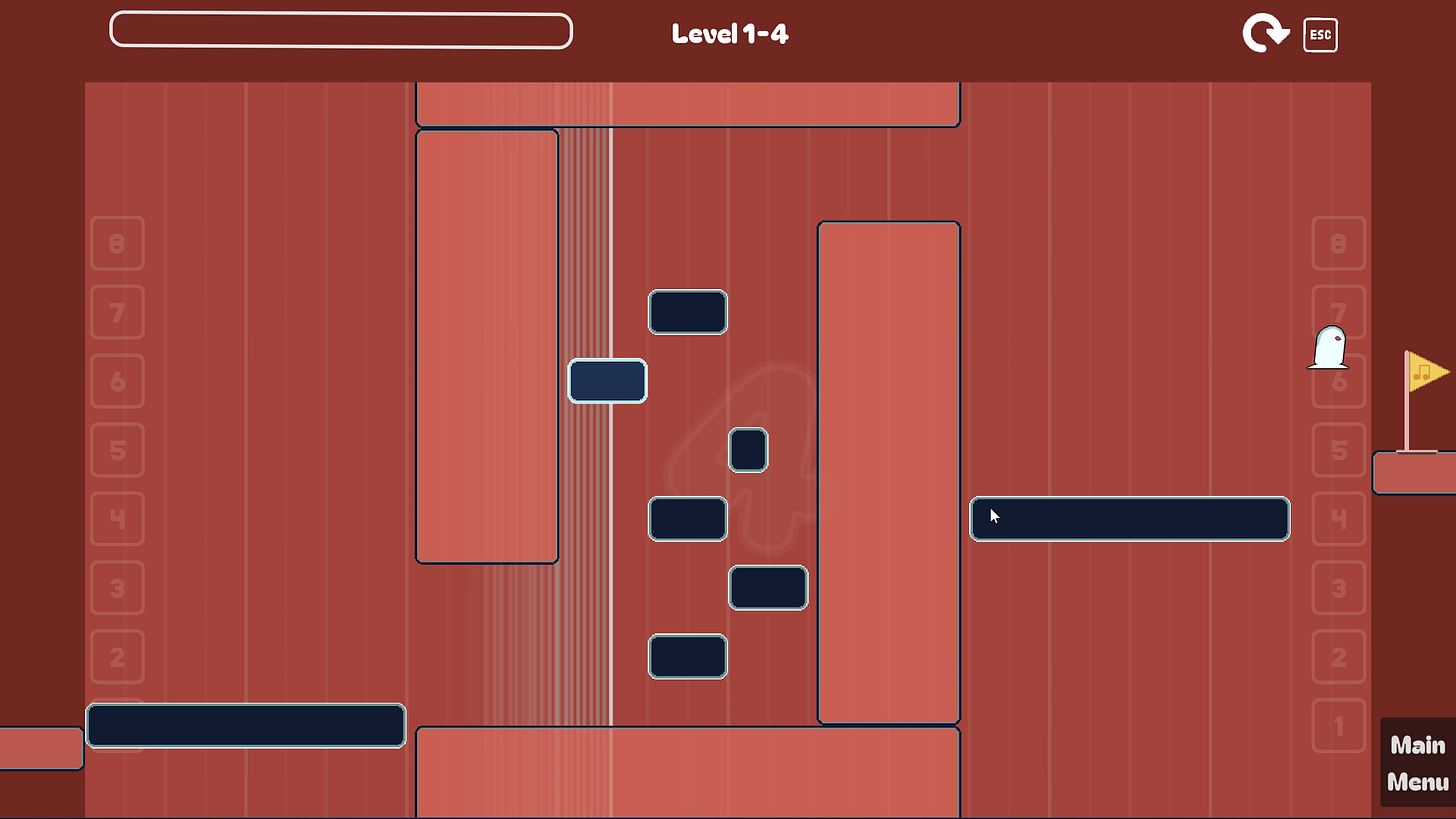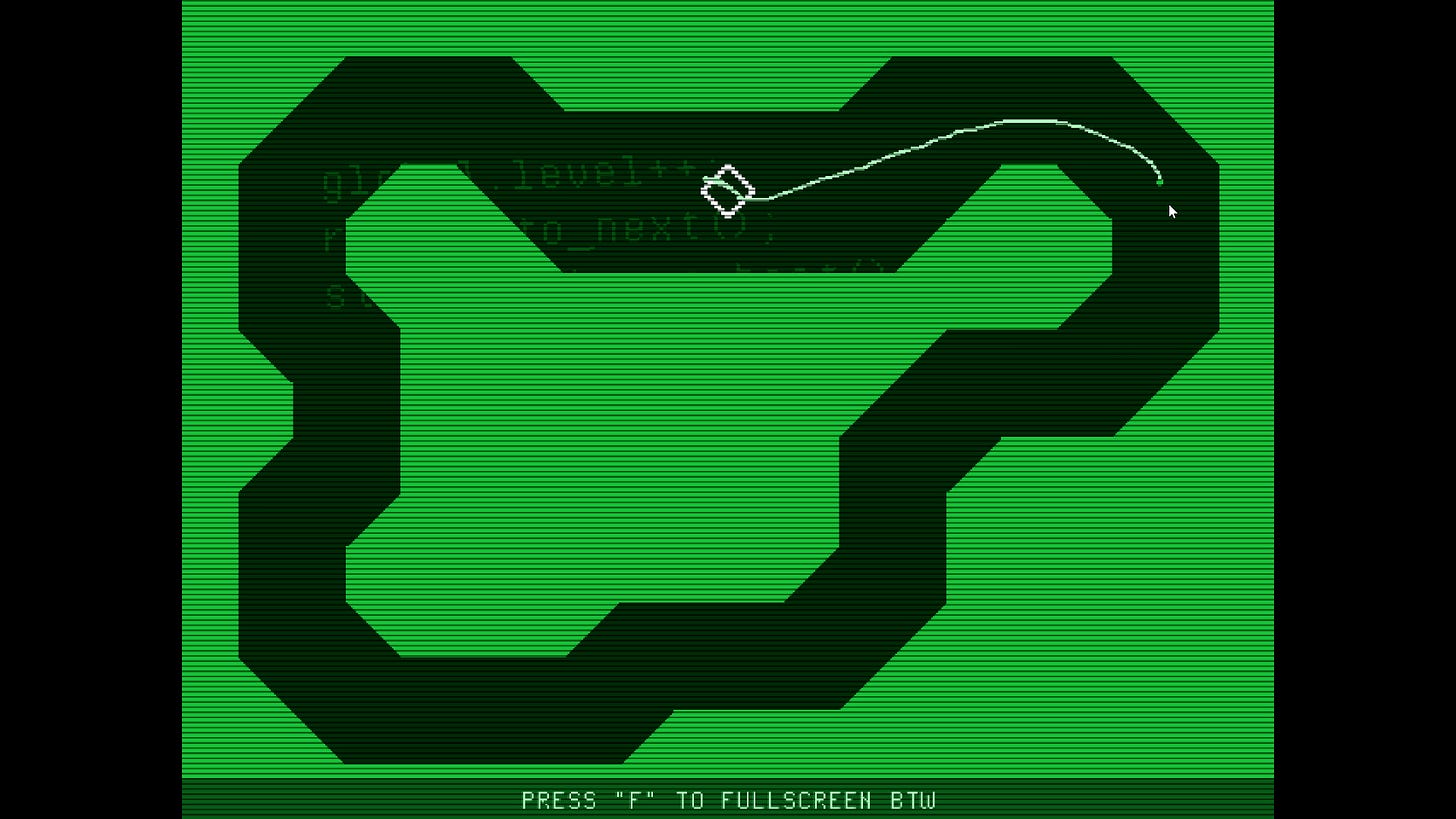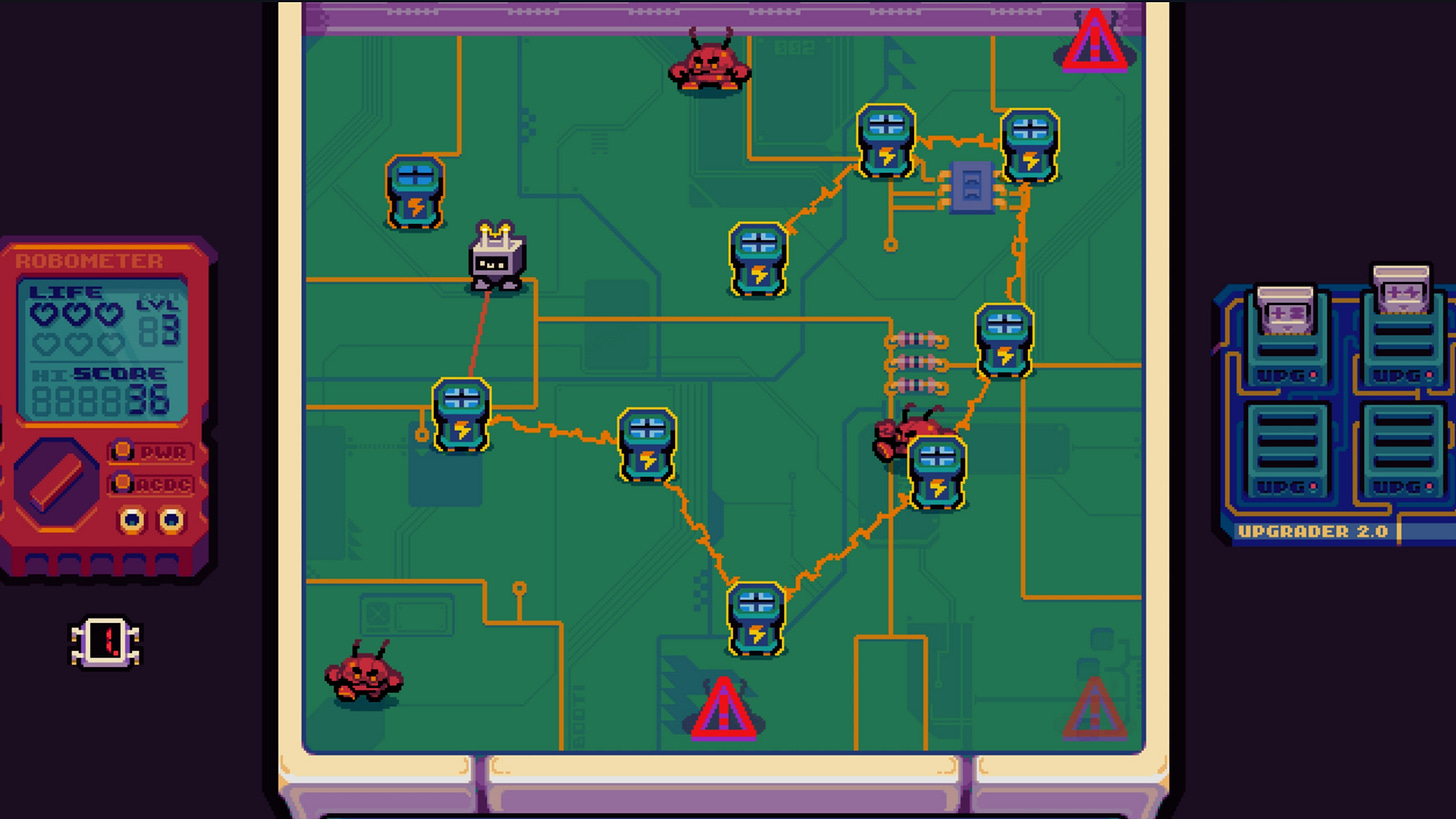Earlier this month we held the 9th annual GMTK Game Jam which is… well, you know the drill by now. It’s a game-making marathon where people race to make a game in just four days, and that game must fit within a specific theme.
As always, we saw even more people enter the jam than last year, with more than 37,000 participants making over 9,600 games. Which means that it’s still the biggest jam itch.io has ever seen. And boy, do their servers feel it.
So, what was this year’s theme? Well, it was a single word: loop. And so we saw thousands of games about programming loops, about musical loops, about running loops around people, about loops in time and in space. The way you all managed to take this theme and spit out so many distinctly clever, imaginative, and fun games… well, it’s absolutely inspiring.
And now it’s time for me to pick my 20 favourite games from the jam…
Now, normally this is where I’d say I’m choosing the “best” games from the jam, or even the “winners” of the jam. But the truth is… as GMTK Jam grows bigger and bigger, I don’t think it makes sense for the whole thing to come down to a single judge who really likes puzzle platformers.
Especially when I’ve only played like 1% of the total entries. So, from now on, I’ll let the community pick the winners through rating and ranking the games. You can see those over on itch.io. But I’ll simply choose some personal favourites. That cool? Cool.
Let’s start with Rhythmetric. This is a game about a circle who fights rather more pointy shapes, using laser beams, dodges, and shields. But it’s up to you when those moves are triggered. You see, there’s a track on the right side of the screen, and here you can plop down moves at different points. Then, when the looping indicator scrolls across the track, it will play each move on the beat.
This turns your fighting style into a personalised anthem. Attack, attack, attack, shield… dodge, dodge, dodge. You know, simply by feel, when it’s time to aim at the enemies and unleash a barrage, and when it’s time to swing the mouse in the opposite direction to dodge away. It turns the player into a deadly DJ, mixing between fighting and composing. And then, as you pick up more beats and add to the track, the game naturally gets more complex. It’s addictive, smart, and puts you into a dizzying zen-like state.
The next game, Voodloop, has a somewhat similar premise. This time, though, it’s a 2D platformer and we can assign moves like jump, kick, and dash - which will then trigger on the beat. So you’ll need to build the right loop to do double jumps over pits, or to fight simple enemies. What I really like about the game, though, is that each level is like a miniature Metroidvania. You must hunt for new moves to lay down on the track - which then lets you access new areas, in order to find new moves - so you can reach the exit and do it all over again.
Also, by changing the style and tempo of each level’s soundtrack, the game takes on a very different feel from stage to stage. Super smart stuff, with a rather dashing, chunky pixel art visual style.
With a theme like loop, we were bound to see a few entries inspired by the ultimate time loop game, Outer Wilds. But my favourite of the bunch is Night O’Clock - a quick-fire murder mystery where you have just one minute to scour a mansion, collect clues, and gather knowledge… before time’s up and you have to start again. A clever twist on the formula is that you keep hold of any item you’ve got when time runs out, so you have to think carefully about, say, which key you want in your hand before restarting the loop.
Night O’Clock is absurdly polished for a game made in four days, and it kept me rapt for the entire run time. An easy recommendation among a sea of games about repeating the same day over and over again.
Now, game ideas can come from the weirdest places. Like, what about that shower thought of… if you plug a power strip into itself, wouldn’t that give you an infinite energy source? Forget conservation of energy and other boring realities - in Infinite Energy, you can cheat physics and unlock an eternal electrical source.
But it’s more than a meme - this is actually a very clever, mind-bending puzzle game. You need to understand a simple set of rules - about where power comes from and where it goes. Deal with restrictions like the short length of your cables. And think outside the box as you make temporary connections and purposefully undo your actions to make everything work. It made my brain hurt… but like, in a nice fuzzy way.
Talk about thinking outside of the box. When developer SI Interactive heard the theme loop, they thought about the looping lasso tool in Photoshop. And so we get PhotoLoop: a game about being a freelance photo editor. Each day you get a request in your inbox. Can you take this photo of me and add hair? Can you block out my ex? Can you add friends to my birthday party? You can then use the loop to select stickers, people, and cartoon characters to place into the photo. Send it back and hope the client is happy.
There’s even a hint of detective work in here, as your clients ask you to figure out relationships from their email. It’s only a sprinkle - but you could see this being expanded into a clever deduction game where you provide your answer through doctored digital images. But as for the game that’s actually here - it’s cute, clever, and as someone who spends their life selecting crap in Photoshop, it was nice to play a game where my pointless life skills are finally validated.
Circuit Breaker starts out as a pretty simple puzzle platformer. Walk, jump, manipulate machines, plop batteries into sockets. But when you finally make it to the far end of the room, you realise you can loop back around to the start and do the whole thing again. Or, you can walk back on yourself and play the level in reverse - all while making changes to the level that may help or hinder your progress depending on which direction you’re going.
It turns a single level into a galaxy-brained spatial reasoning puzzle. I want to reach this spot but it’s impossible from where I’m standing. But if I loop all the way around the other side, I can make my way up! It reminds me of those puzzle box Zelda dungeons I love so much. It scratches a very specific itch, and that’s why I dig it.
Walk It! takes Crypt of the Necrodancer - that excellent roguelike where you have to move on the beat of the music - and turns it into a series of single-screen vignettes. You play as a dancing dude who cuts shapes from pavement slab to pavement slab, while dodging dogs, pushchairs, and Pilates posers. You have to move to the beat. You have to start on the first beat. And you have to reach the goal on the last beat.
It should be effortless. And maybe it is if you have any sense of rhythm. But I do not - so it turned each one of these short levels into an epic showdown where I had to learn the beat, internalise the music, and feel the rhythm before I could finally dance my way to victory. Great animations, great art style, make 100 levels and put it on Steam.
I’m always impressed by people’s ability to make a Zachlike - a game inspired by SpaceChem and Opus Magnum - during a 4-day jam. It shouldn’t be possible! And yet, here we are. This is Cooking by the Numbers, a game where you build an engine to turn one number into another, using nodes that can add, minus, divide, and multiply. But most importantly, there are the conditional nodes: do one thing if the number is greater than 15, and another if it’s less.
With these, we can - going back to the theme - make loops where the same sum is performed over and over until the condition is met, and then a different path is taken through the flow chart. You’re constantly thinking about how to use loops to get the result you want. And - if you didn’t realise it by now - you’re also learning the basics of programming, as you figure out the inner workings of if statements and while loops. You clever clogs, you.
Okay, this game - Caw Across Time - needs a bit of set-up. You get a phone call - it’s you from the future. Future you delivers a key that helps present you get through a door. Handy! But now the space-time continuum is all goofy, so you’ve gotta fix it. But aha - you’re now future you. And you can deliver the key to present you. Who is now past you. Thus finishing the time loop, fixing that nasty rift in the timeline, and letting you move on to the next level.
Did that make sense? Does your brain hurt? Whatever. Keep up. Because this game is really clever. A whole sequence of single-screen conundrums where you have to not only make it through the level, but also tidy up the timeline by putting back any time-travelling keys and blocks you end up using. It’s an absolute belter of a game - and it’s utterly frustrating to play a puzzle platformer made in 4 days that’s better than the one I made in 4 years. Burn this jam to the ground.
Nokia classic Snake got some love in this loop-themed jam. But my absolute favourite take on the idea came from Goop Snake. It’s a Sokoban-style grid puzzler that works on the basic rules of Snake - eat apples to grow in size. Your lengthy body mimics the exact movements of your head. But then it adds loads more ideas. Eating soft apples lets you shift past your own stomach, but hard apples block your head entirely. You can spit out apples to shrink back down, or hold down buttons. Stuff like that.
With each of these additions to the rule set, Goop Snake can create some truly clever levels, with those all-important “a-ha” moments.
Alright, let’s look at Curse of the Amethyst Skull. This is a dungeon-crawling puzzle game, where each time you die - you have to start the whole thing from scratch. But you can at least keep your items, your notes, your knowledge, and most fun of all, your hand-drawn map of the environment. Maybe I’m just a massive frickin’ nerd, but I really enjoyed charting out the contours and contents of this underground world - making notes of traps and treasure and dead ends.
I think I hit a bug where my map didn’t show properly, because I think I should have been able to see my current position on the map screen. But I guess I just played on hard mode, because I had to draw things out without knowing where the hell I am.
Another nice touch - you can light lanterns to know where you’ve been on previous runs. And when you come back as a new adventurer, you have a new, randomly generated name. No idea how Frances Grumblejack got access to Roswell Chapman’s notebook, but we’ve seen stranger things in this jam.
Here’s another common take on the theme: looping around from one side of the screen to the other, like in Pac-Man. Mobia’s Trip uses it as the main mechanic in a cute platformer - hold a key to lock the camera in place, and then you can waltz off to the left of this frame to appear on the right - which lets you bypass a big ol’ wall and be on your way.
This kicks off a number of clever scenarios where you’re manipulating the position of the frame, perhaps shifting the frame up with each jump so it’s high enough to reach a platform. Another mechanic comes from looping through the loop multiple times to build up speed, before using that excess energy to crash through the floor. It’s very nicely done. Shout out to Pimby’s Workaround, which had a similar idea and is also lots of fun - there wasn’t much between these two for me!
How’s this for a unique spin on the card battler? Like a Record puts your moves on a spinning disc - playing each card as the record shifts position. Only - your opponent is doing the same thing. So you’ll need to be smart about how the two discs will line up. Things get even more strategic when you add in cards that can change the direction of your disc - or your opponent’s. I’ll be honest, this was too much for my pigeon-sized mind, but even this simpleton can see the potential of putting Hearthstone on a turntable.
Here’s a clever one - Side Effects. It’s a puzzle game on a Rubik’s Cube. You’re presented with a starting point. Perhaps some seeds. And a goal. Say... a forest. By rotating the cube, you move the seeds into different zones - the water zone turns the seeds into saplings, and the sun zone turns the saplings into trees. Done, smashing.
But just like solving a real Rubik’s Cube, things get complicated fast. Sometimes you’ll need to manipulate things so two elements perfectly line up. Other times you’ll realise that one turn will solve one part of the puzzle, but utterly ruin another part. It becomes a sticky strategy game of thinking several moves ahead to get everything to the goal simultaneously. Maddening, but good.
Next up: Killover. A super-stylish game where you hunt down and kill a target. Then you do it again - only you also have to kill yourself from the previous loop. Then do it again and again and again, and now you’ve got to murder an entire army of yous from past loops.
Every time you advance, the game naturally gets harder and more chaotic. You’ve got to defeat more targets in the same short timeframe. And you have to dodge the bullets of all your previous selves. It becomes a manic warzone of your own creation as you dance through a hailstorm of bullets for which, to be honest, you only have yourself to blame.
Quick shout-out to the clever animation style. Snapping between distinct poses makes things very economical for a hurried game jam participant. But it also means that every time the game freeze-frames on the last kill of the round… it looks utterly badass. Everyone’s going to be jacking this style soon, I can feel it.
Okay, this is Draftula - which deserves a nod for its name alone. On each loop, you draft a new mansion for Dracula by plonking down rooms on this Tetris-style board. Each room has benefits and drawbacks - and must be placed strategically to get the most out of them. For instance, one room adds more coins every time you draft another room on the same row. Another room blocks you from drafting anything directly above it. Once you run out of money, a valiant knight knocks on the door, knocks down your gaff, and you have to start the whole thing again.
But there’s also a meta-level mystery to solve, as you must draft specific rooms next to each other to unlock more stuff - like putting two sigils next to each other to unlock infinitely high buildings. There’s a, ahem, lot of room to build on top of this idea, if the developer fancies it.
Okay, next up is Songrunner. This is a series of single-screen platforming stages where you build the level yourself. How? By playing notes - triggered through the keys 1 through 8 - when the timeline sweeps through the stage. So it’s like Lumines, but as a platformer. And that’s pretty neat. Best of all, your stage-making shenanigans create a unique track as you play. And when you finish the stage, all the other instruments kick in to turn your level layout into a song - which sounds surprisingly good for a track made up of awkwardly placed platforms. This one is simple but smart - just the way I like ’em.
While 1 couldn’t be much more basic. Use your mouse to draw a loop around the entire screen. And yeah, it’s so straightforward that you can look at the screen and intuit what to do in seconds. But that’s an impressive feat. Also impressive: how the developer used music, visual effects, and a singular sense of style to make something so basic into something thrilling and dangerous. An easy recommendation.
Another interesting take on the theme: how repeating the same level over and over again allows you to gain mastery and new understanding. That’s clearly shown in Loophole Pie. The premise is simple: a little boy wants to sneak into his neighbour’s garden and pinch a cooling pie. Easy. Only once you do that, the loop repeats with a new rule that blocks you from doing what you did in the last go. So: no more gate. Maybe sneak across the grass. Okay, next time - no gate, no grass. Then: no gate, no grass, no crates, no remote-controlled lawnmower, no rocks.
It turns the game into a sort of mix of Untitled Goose Game and Hitman, as you must use your mastery of this simple level to find more and more outlandish ways to reach the pie. It’s a great game design lesson: the more restrictions you put on the player, the more devious they must become.
And then finally - there were a lot of games in the jam about drawing loops around enemies to kill them. That became a common refrain. But no one did it better than the developers behind Bootloop. This is a rapid-fire knockabout arcade gem about ensnaring computer viruses in a deadly electrical trap. Here’s how it works: walk into a peg to start a loop. Then walk into another to make it bigger. Then hit Z to close the circuit and make a zapping zone in the middle.
Simple enough, but things escalate. For one, every peg you use must cool down, so using too many at once will leave you vulnerable after you attack. New enemy types appear, including a nasty scissor enemy that can cut your wire before you have a chance to complete the circuit. And then, between rounds, we get the classic three-upgrade screen as we must choose whether to boost health, the circuit, or a pack of last-ditch bombs.
It’s got fantastic pixel art and music, but this thing is not all style, no substance. It’s also just a really sharp time sink that I could see myself going back to again and again. Bravo, Team Booti.
And so there we have it! By thinking about a game being on a loop, we got games about building knowledge and mastery, about considering your past actions, about feeling the beat, and about manipulating space and time.
And now it’s, ahem, time for some honourable mentions!
Ninja Step has you programming the looping choreography of your player character to get through baddies and obstacles. Bend-Jo has you bending the entire playspace to solve mind-melting puzzles. Love Letters has you circling letters to get your jumbled words out to a lady who has you tongue-tied. And Loop/Death has you looping back to the starting point to solve tricky conundrums.
I could go on - did I mention there were over 9,000 games submitted? As always, I want to give a humongous thank you to everyone who took the time to make a game. There’s something amazing about a bunch of people coming together to make something just for the thrill of it. To be part of a community, to impress their friends, to better their skills, or for the sheer joy of making games.And all by hand - no AI slop in sight. It’s absolutely inspirational.
Thanks also to my fabulous mod team who make the jam run smoothly, the staff at itch who are always on hand to help, and my patrons who pay for the jam and mean we never need to bother with corporate sponsors. GMTK Game Jam will be back in 2026 for its 10th birthday! 10! How time flies! You can register your interest now, by clicking here. Thanks, see you soon.


